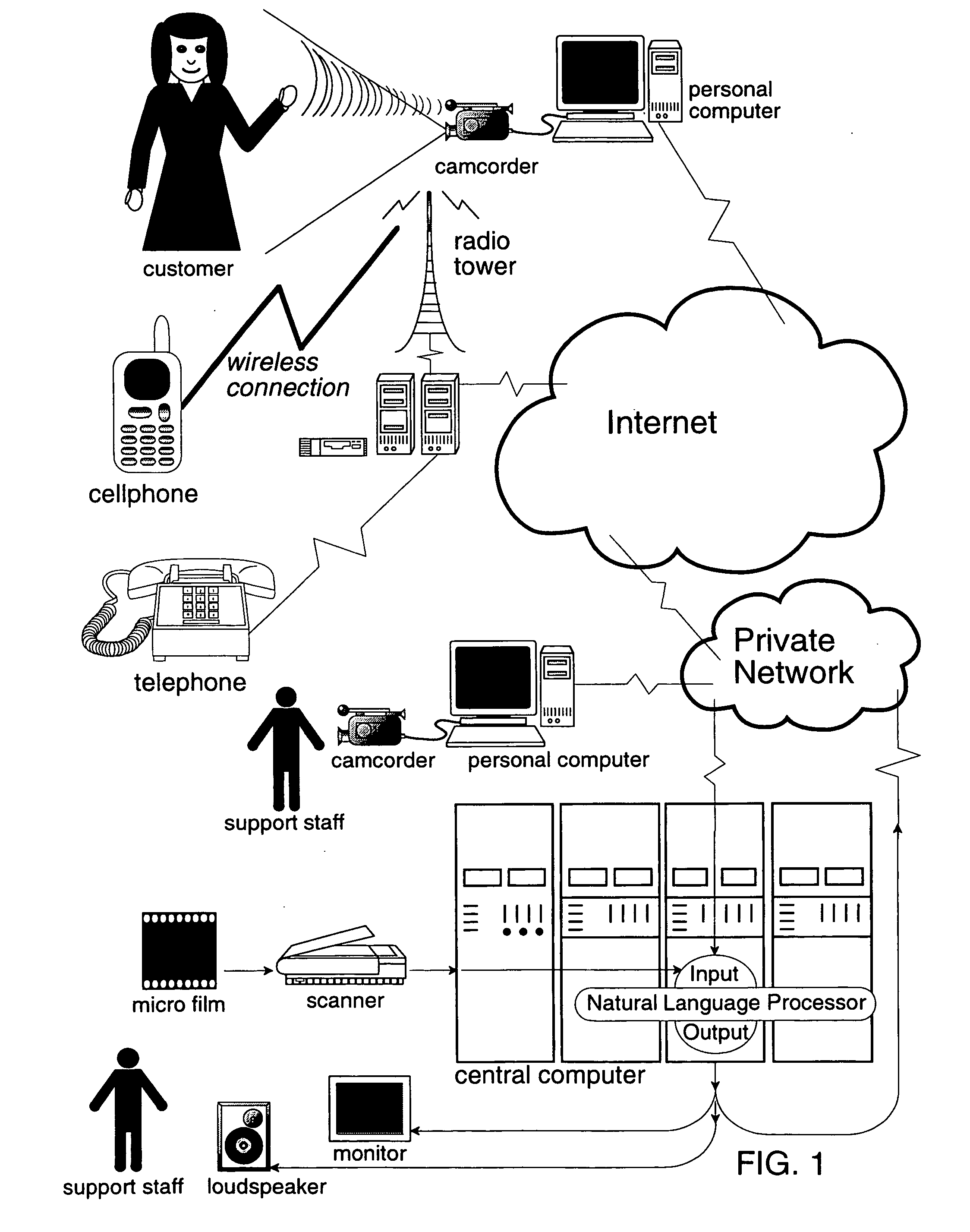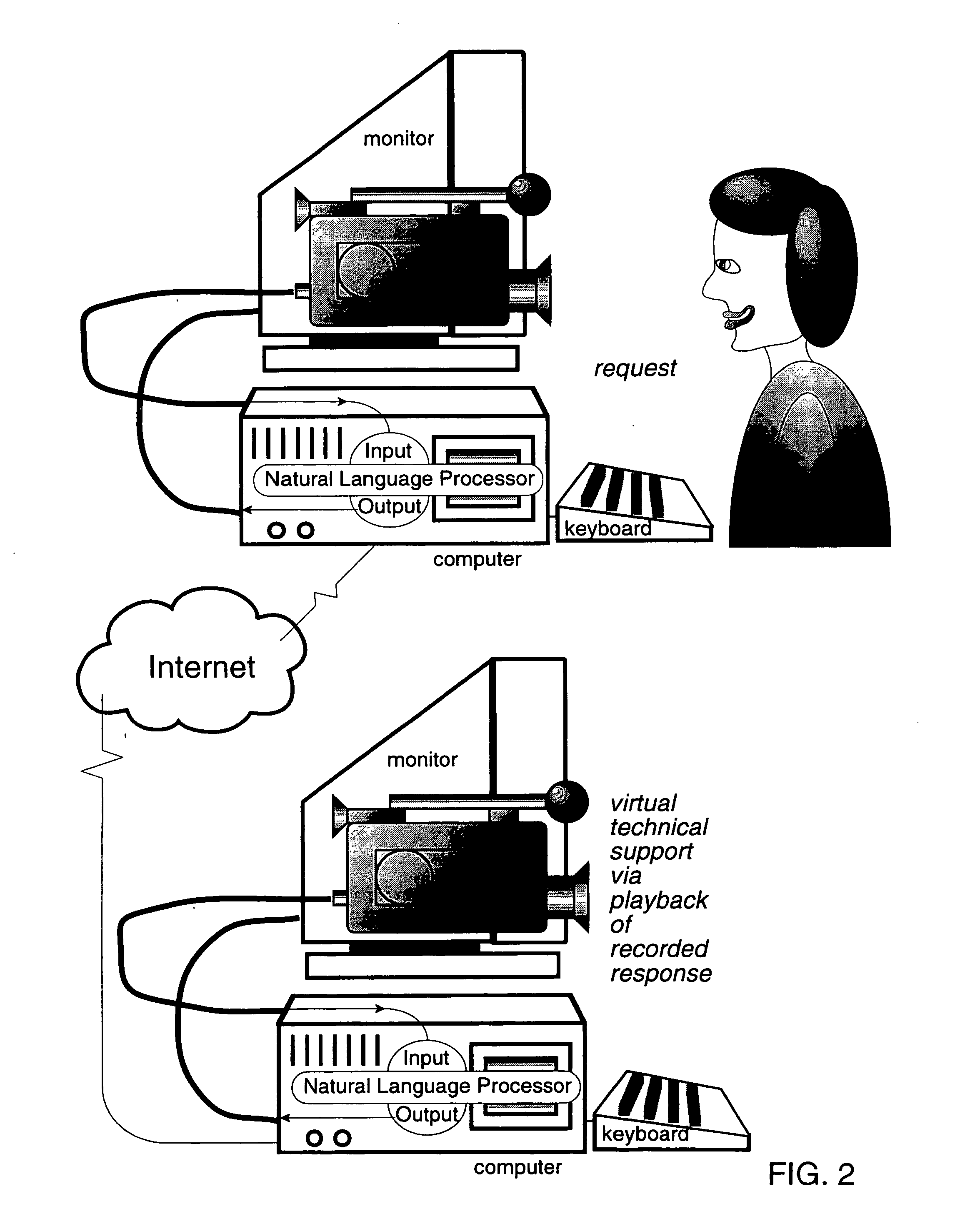Method and system for using voice input for performing network functions
a network function and voice input technology, applied in the field of natural language forms, can solve the problems of inability to efficiently correlate even a fraction of such inputs, increase accuracy at the expense of flexibility, and the vast majority of inputs that a human could easily correlate remain useless to such systems, so as to achieve flexible and efficient natural language interfaces
- Summary
- Abstract
- Description
- Claims
- Application Information
AI Technical Summary
Benefits of technology
Problems solved by technology
Method used
Image
Examples
Embodiment Construction
[0083] In accordance with the present invention, topological methods disambiguate polysemy by measuring the relative distance between symbols in a semantic network. In a well constructed semantic network, the distance between symbols is proportional to the closeness in meaning between symbols. Consequently the contextual meaning of a symbol can be found by locating the closest symbol to a set of symbols defining the context. Both new symbols and new meanings can be recorded simply by adding new symbol nodes to existing topologies. Shifts in meaning can be recorded simply by shifts in topologies.
[0084] However, among others, two problems with topological methods, which have prevented them from succeeding in prior art, are overcome with the present invention. The first problem is that the topological distance between a pair of symbol nodes in a semantic network may not reflect closeness in semantic meaning between the pair of symbol nodes. This problem can be avoided by adjusting aut...
PUM
 Login to View More
Login to View More Abstract
Description
Claims
Application Information
 Login to View More
Login to View More - R&D
- Intellectual Property
- Life Sciences
- Materials
- Tech Scout
- Unparalleled Data Quality
- Higher Quality Content
- 60% Fewer Hallucinations
Browse by: Latest US Patents, China's latest patents, Technical Efficacy Thesaurus, Application Domain, Technology Topic, Popular Technical Reports.
© 2025 PatSnap. All rights reserved.Legal|Privacy policy|Modern Slavery Act Transparency Statement|Sitemap|About US| Contact US: help@patsnap.com



